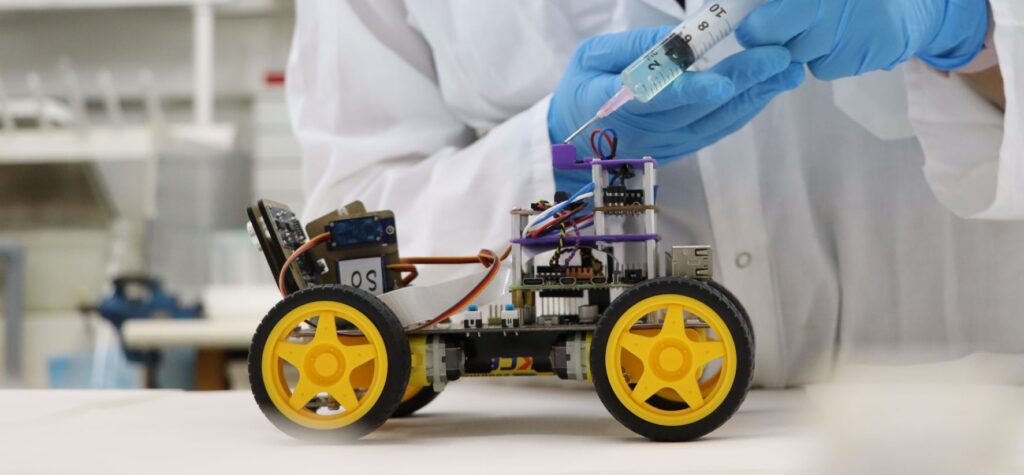A robot has been developed with a biological sensor as a “nose” that is 10,000 times more sensitive than existing devices.
Researchers at Tel Aviv University say it could be used in the future to identify explosives, drugs, and diseases.
They describe their achievement as a “technological-biological breakthrough” – the first time a robot has been able to “smell” using a biological sensor.
The sensor sends electrical signals as a response to the presence of a nearby odor, which the robot can detect and interpret.
“Man-made technologies still can’t compete with millions of years of evolution. One area in which we particularly lag behind the animal world is that of smell perception,” said Dr. Ben Maoz and Prof. Amir Ayali, among those who led the research.
“An example of this can be found at the airport where we go through a magnetometer that costs millions of dollars and can detect if we are carrying any metal devices.
“But when they want to check if a passenger is smuggling drugs, they bring in a dog to sniff him. In the animal world, insects excel at receiving and processing sensory signals.”
The results of the study are published in the prestigious journal Biosensor and Bioelectronics.
The research team successfully connected the biological sensor to an electronic system and using a machine learning algorithm, were able to identify odors with a level of sensitivity 10,000 times higher than that of a commonly used electronic device.
Prof. Yossi Yovel, who also jointly led the research, said: “We connected the biological sensor and let it smell different odors while we measured the electrical activity that each odor induced.
“Then, in the second step, we used machine learning to create a ‘library’ of smells. In the study, we were able to characterize 8 odors, such as geranium, lemon and marzipan, in a way that allowed us to know when the smell of lemon or marzipan was presented.”
Related posts

Israeli AI Safety Tool Among TIME’S Best Inventions For 2024

TAU Team Discovers Mechanism To Eliminate Cancerous Tumors

Ashdod Port Investing In Startups As Part Of Innovation Strategy




Facebook comments